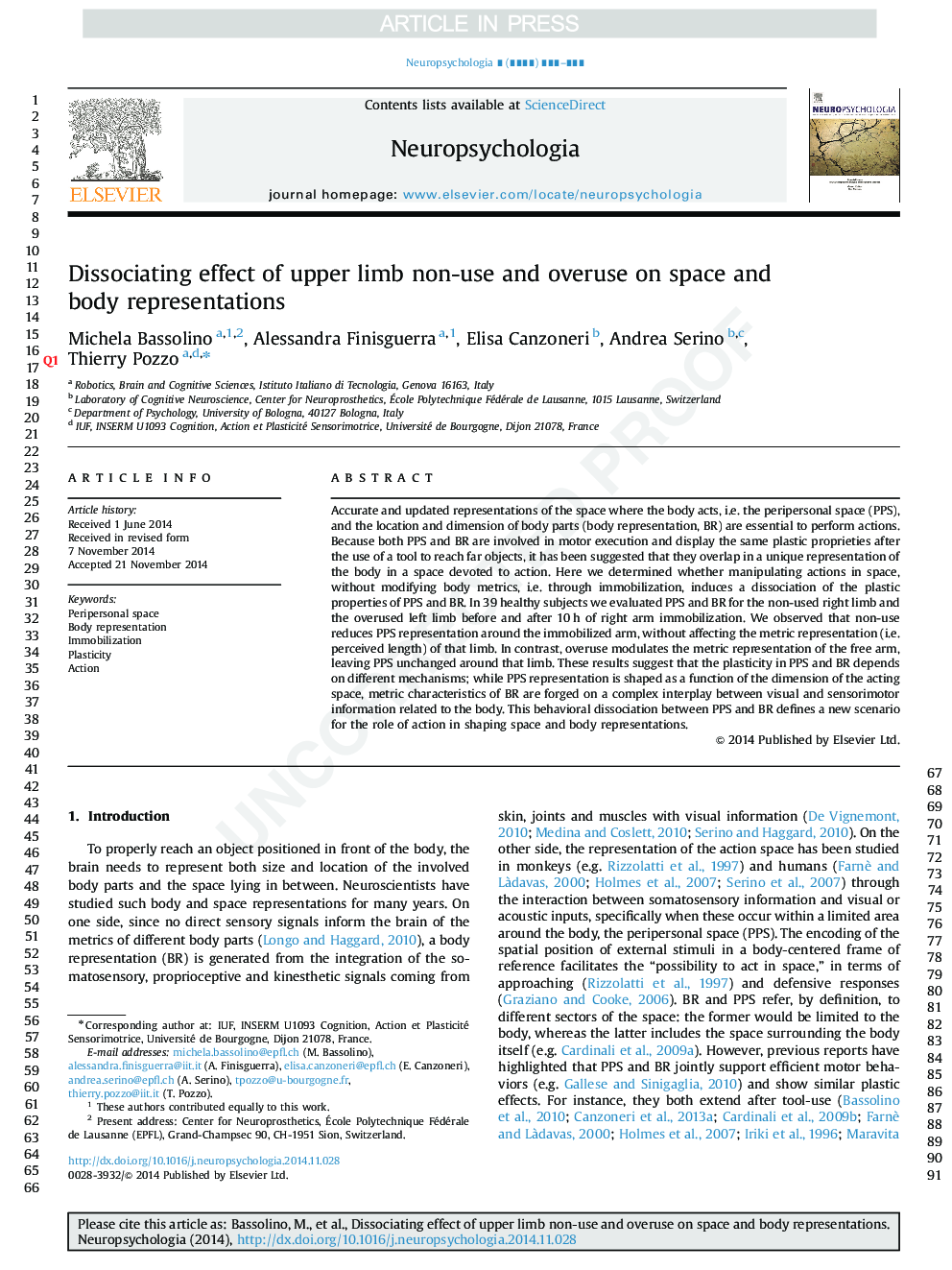| کد مقاله | کد نشریه | سال انتشار | مقاله انگلیسی | نسخه تمام متن |
|---|---|---|---|---|
| 7320271 | 1475583 | 2015 | 8 صفحه PDF | دانلود رایگان |
عنوان انگلیسی مقاله ISI
Dissociating effect of upper limb non-use and overuse on space and body representations
ترجمه فارسی عنوان
عدم تفکیک اثر از عدم استفاده از اندام فوقانی و استفاده بیش از حد در فضای و نمادهای بدن
دانلود مقاله + سفارش ترجمه
دانلود مقاله ISI انگلیسی
رایگان برای ایرانیان
کلمات کلیدی
فضای پرسپولیس، نمایندگی بدن، ایمن سازی، پلاستیک عمل،
موضوعات مرتبط
علوم زیستی و بیوفناوری
علم عصب شناسی
علوم اعصاب رفتاری
چکیده انگلیسی
Accurate and updated representations of the space where the body acts, i.e. the peripersonal space (PPS), and the location and dimension of body parts (body representation, BR) are essential to perform actions. Because both PPS and BR are involved in motor execution and display the same plastic proprieties after the use of a tool to reach far objects, it has been suggested that they overlap in a unique representation of the body in a space devoted to action. Here we determined whether manipulating actions in space, without modifying body metrics, i.e. through immobilization, induces a dissociation of the plastic properties of PPS and BR. In 39 healthy subjects we evaluated PPS and BR for the non-used right limb and the overused left limb before and after 10Â h of right arm immobilization. We observed that non-use reduces PPS representation around the immobilized arm, without affecting the metric representation (i.e. perceived length) of that limb. In contrast, overuse modulates the metric representation of the free arm, leaving PPS unchanged around that limb. These results suggest that the plasticity in PPS and BR depends on different mechanisms; while PPS representation is shaped as a function of the dimension of the acting space, metric characteristics of BR are forged on a complex interplay between visual and sensorimotor information related to the body. This behavioral dissociation between PPS and BR defines a new scenario for the role of action in shaping space and body representations.
ناشر
Database: Elsevier - ScienceDirect (ساینس دایرکت)
Journal: Neuropsychologia - Volume 70, April 2015, Pages 385-392
Journal: Neuropsychologia - Volume 70, April 2015, Pages 385-392
نویسندگان
Michela Bassolino, Alessandra Finisguerra, Elisa Canzoneri, Andrea Serino, Thierry Pozzo,
